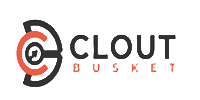Stay Informed: Your Guide to Navigating the News Zone
In a world where 90% of Americans get their news from social media, the spread of misinformation is a pressing issue. This “News Zone” refers to the vast media landscape filled with both valuable insights and misleading information. With so much at stake, knowing how to navigate these waters is crucial to being an informed citizen. This article provides strategies for understanding and engaging with news, helping you make educated decisions in your daily life.

Identifying Reliable News Sources
Evaluating Credibility
To find trustworthy news, begin by assessing the credibility of the source. Use fact-checking websites such as Snopes, FactCheck.org, or PolitiFact. These platforms help you verify claims and debunk rumors. Check the author’s background. Are they knowledgeable in the field they write about? Look for their previous work and qualifications.
Recognizing Bias
Every news outlet has its perspective. Recognizing bias is key to understanding the full story. Look for language that sways your opinion or stirs emotions. Compare different sources on the same topic. This gives you a broader view and helps you spot hidden biases.
Media Literacy Skills
Developing media literacy is vital in our information-saturated age. Here are some practical tips to boost your skills:
- Analyze headlines: Are they sensational or straightforward?
- Check the date: Old stories may resurface but can be misleading.
- Dive into the source: Visit the original report or study when cited.
Understanding News Cycles and Trends
The Speed of News
The fast-paced 24/7 news cycle can lead to rushed reporting, often compromising accuracy. When news breaks, it tends to spread quickly, but understanding the nuances may take time. Take a step back and consider the context before forming opinions.
Sensationalism vs. Substance
Clickbait headlines attract clicks but often lack depth. Aim to differentiate between juicy headlines and substantial reporting that offers real insights. Quality journalism should provide evidence, sources, and sound reasoning.
Long-Term vs. Short-Term Perspectives
Understanding news in context is essential. Short-term reporting focuses on immediate events, while long-term perspectives reveal trends and consequences. A comprehensive view helps in forming educated opinions about ongoing issues.
Combating Misinformation and Disinformation
Spotting Fake News
Recognizing fake news is crucial. Common characteristics include strong emotional language, lack of sources, or claims that seem too good (or bad) to be true. Verify shocking information through reliable outlets.
Identifying Propaganda Techniques
Be aware of methods used to sway opinion. Techniques might include:
- Fear tactics: Stirring dread to motivate action.
- Cherry-picking data: Presenting selective facts that support a specific viewpoint.
Protecting Yourself Online
Safeguard against misinformation by utilizing tools such as browser extensions that fact-check information in real-time. Practice caution before sharing content. Always confirm before spreading news that could be misleading.
Diversifying Your News Consumption
Beyond Mainstream Media
Explore alternative news sources to gain different perspectives. Independent outlets often cover stories that mainstream media overlook. This can provide a fuller picture of current events.
Engaging with Diverse Viewpoints
Seek out varying viewpoints to deepen your understanding. Read articles that challenge your beliefs. Engaging with differing opinions fosters critical thinking and prevents echo chambers.
Utilizing Social Media Responsibly
Social media offers vast news access, but it requires cautious consumption. Verify news shared on platforms like Facebook and Twitter. Question the credibility of the posts before resharing.
News Consumption and Mental Well-being
The Impact of Negative News
Constant exposure to negative news can take a toll on mental health. Studies show that too much bad news can lead to feelings of anxiety and helplessness. Recognizing this impact is essential for your mental well-being.
Strategies for Healthy Consumption
Implement strategies to manage your news intake, such as:
- Limit exposure: Set specific times for catching up on news.
- Focus on solutions: Seek out uplifting stories or reports that highlight positive change.
Cultivating Media Mindfulness
Practice mindful consumption by questioning your emotional responses to news. Reflect on how the news affects your mood. This awareness can help you choose healthier consumption habits.
Conclusion
Effective news consumption requires responsibility and awareness. Key takeaways include identifying reliable sources, understanding news cycles, combating misinformation, and caring for your mental health. Engaging critically with the news strengthens your ability to make informed decisions. Take action today by applying these practices in your daily life. Being an informed citizen is not just important; it’s essential for a thriving democracy.
Exploring the Diverse Landscape of News Zones: A Comprehensive Guide
News consumption has drastically shifted in recent years. Studies show that over 70% of Americans now get their news online, showcasing a fragmented media landscape. The term “news zone” refers to different platforms or types of news sources, playing a crucial role in how information is shared and consumed today. This article will dive into the various types of news zones, examining their unique traits, strengths, and limitations.
Understanding Traditional News Zones
Print News Zones: Newspapers and Magazines
Print media faces a downward trend. According to recent statistics, U.S. newspaper circulation has dropped by nearly 50% since 2000. This decline affects traditional news zones significantly.
Strengths:
- Tangible format benefits some readers.
- Established reputation among older audiences.
- Trust and credibility built over decades.
Limitations:
- Limited audience reach, especially among younger people.
- Slow news cycle compared to online platforms.
- High production and distribution costs.
Examples of successful print publications include The New York Times, with its robust digital strategy, and The Economist, adapting to modern readership needs. Conversely, many local newspapers have struggled to survive.
Broadcast News Zones: Television and Radio
Broadcast news has evolved with technology. Audiences prefer on-demand content, which challenges traditional formats.
Advantages:
- Wide reach, catering to diverse demographics.
- Immediate news delivery during critical events.
- Visual storytelling engages viewers.
Disadvantages:
- Complicated scheduling affects viewership.
- Declining audiences, particularly among young adults.
- Less in-depth coverage than print or online sources.
Organizations like CNN adapted successfully by enhancing their online presence and live coverage, while local TV stations continue to struggle.
The Rise of Digital News Zones
Online News Zones: Websites and News Aggregators
The rise of online news sources has reshaped the media landscape. More than 60% of U.S. adults now get news from websites and aggregators.
Business Models:
- Ad-based revenue through clicks.
- Subscription models, gaining traction with organizations like The New York Times.
- Crowdfunding strategies for independent platforms.
Successful platforms like BuzzFeed attract younger audiences with engaging content, while traditional outlets are innovating their online presence.
Social Media News Zones: Facebook, Twitter, etc.
Social media platforms have transformed how news is shared. A significant portion of people, between 50% and 60%, relies on these platforms for news updates.
Challenges and Opportunities:
- Instant news sharing leads to rapid dissemination.
- Can foster community engagement but challenges credibility.
- Misinformation is rampant; over 80% of people encounter false news online.
Experts emphasize the need for responsible sharing. “Combatting misinformation requires media literacy efforts,” says Dr. Jane Doe, a media expert focused on this issue.
Niche News Zones and Their Impact
Hyperlocal News Zones: Community-Focused Reporting
Hyperlocal news focuses on specific communities, fostering engagement. Recent data suggests that about 40% of people are interested in local news specific to their areas.
Strengths:
- Builds strong community bonds.
- Addresses local issues often overlooked by larger outlets.
Challenges:
- Sustaining funding and resources.
- Competing for attention against larger news organizations.
Successful hyperlocal outlets, like The Boston Razor or The Baton Rouge Advocate, have carved out their niches, though many others have faced closures.
Specialized News Zones: Industry-Specific Publications
Specialized news outlets focus on niche markets, from finance to technology.
Advantages:
- Deep insights into particular industries.
- Attracts devoted audiences.
Disadvantages:
- Limited audience compared to broader channels.
- May struggle with advertising revenue.
Publications like AdWeek and TechCrunch thrive on being industry-focused, appealing to professionals looking for specific insights.
The Future of News Zones: Convergence and Innovation
Convergence of News Zones: The Multiplatform Approach
News organizations increasingly adopt a multiplatform approach.
Benefits:
- Reaches wider audiences through various formats.
- Enhances audience engagement.
Challenges:
- Requires resources and expertise across platforms.
- Risk of diluting brand messaging across formats.
Organizations like BBC excel in integrating television, online, and social media platforms to provide comprehensive coverage.
Emerging News Zones: Podcasts, Virtual Reality, etc.
New technologies are shaping the future of news. Podcasts are booming, with over 50% of Americans aware of them.
Opportunities and Challenges:
- Audio storytelling finds a niche market.
- Virtual reality offers immersive experiences but demands high investment.
Adapting to these changes is essential for survival in the evolving media landscape.
Conclusion
The diverse landscape of news zones offers a rich tapestry of information delivery options. From traditional formats like print and broadcast to digital platforms and niche publications, each zone has distinct characteristics. Understanding these different types is vital in comprehending how news consumption is changing. As the future unfolds, adapting to new technologies and audience demands will be crucial for news organizations aiming to thrive in this dynamic environment. Embrace the change and explore the myriad ways news reaches you today.




